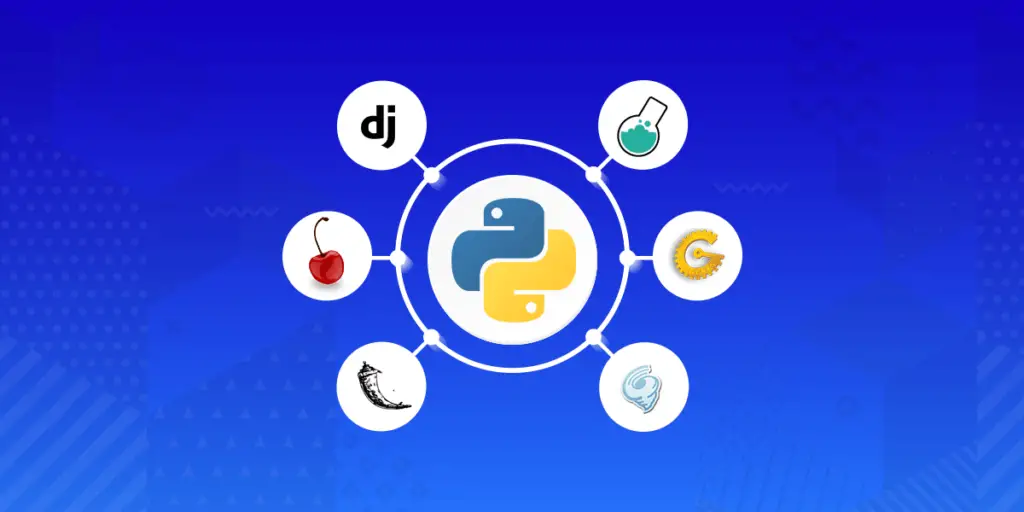Python has some of the most frequently used frameworks that have been chosen due to the simplicity of development and minimal learning curve. Based on the latest Stack Overflow 2020 poll, 66 percent of programmers are using the two of the most popular Python web frameworks, Django and Flask, and would want to continue using them. In addition, according to the study, Django is the fourth most desired web framework.
If you are looking to hire Python programmers, you should know that Python frameworks are in high demand since Python is an open-source software being used and produced by software developers worldwide. It is easily customizable and adheres to industry standards for interaction, automating programming, and certification.
Python has emerged as an excellent platform. It has been a popular choice among developers, and with the addition of numerous frameworks, it is quickly becoming a market leader.
Python is also gaining popularity due to significant qualities such as functionality, originality, and general curiosity that have emerged as reasonably important factors. However, we are all aware of the fact that frameworks may aid in the development cycle by making it much easier for developers to work on a project.
Top 5 Python Frameworks in 2021

1. Django
It is the most popular comprehensive python framework, ranking in the top ten web frameworks of the year 2020. It is easily accessible software that you can use, with a plethora of characteristics that makes website building much easier.
It comprises URL navigation, dbms configuration management and paradigm upgrades, as well as authentication, virtual server integration, a template engine, and an object-relational mapper (ORM). It helps in the creation and delivery of highly scalable, quick, and resilient online applications. It has extensive documentation and customer assistance. It also includes pre-built packages as well as libraries that are ready to use.
2. Pyramid
Just another comprehensive Python framework is Pyramid whose main objective is to make creating programs of any complexity straightforward. It offers significant testing assistance as well as versatile development tools. Pyramid’s function decorators make it simple to send Ajax queries. It employs a versatile method to secure authorisation and verification.
With simple URL creation, fragment shaders, propositions and formatting, and material requirements, it makes web application development and implementation much more enjoyable, reliable, and efficient. Quality measurement, infrastructure security, structuring, extensive documentation, and HTML structure creation are also included in the pyramid.
3. Flask
Flask is often regarded as the greatest Python microframework because it is extremely lightweight, flexible, and adaptable. It is open-source and works with Google App Engine. It has enhanced and secured support for cookies for building client-side connections, and makes recommendations rather than imposing any requirements.
Flask has an integrated development server, HTTP request processing, and Jinja2 templating. It has a simple architecture and supports unit testing. Some of the other significant characteristics of Flask include object-relational mapping, a configurable app structure for file storage, and built-in debugging that is quick, utilises Unicode, and is completely WSGI compliant.
4. Web2Py
Web2Py is another open and free, comprehensive based on Python web interface that is mostly put to use for the rapid creation of massively efficient, secured, and modular database-driven internet applications. With the help of a web browser, a Standard Query Language database, and a web-based frontend, this framework conveniently manages the Python application development method.
Clients can also use web browsers to develop, organise, administer, and release web-based applications. If something goes wrong, it features an in-built mechanism for releasing tickets. Web2Py is highly customizable, which means it is fully compatible and has a large community of supporters.
5. CubicWeb
It is an LGPL-licensed semantic python custom web foundation. This framework aids developers in the construction of web apps by reusing cube-based elements. It adheres to an object-oriented structure, which makes the software more efficient, easier to understand and analyze.
It facilitates data-related inquiries by incorporating RQL, or Relational Query Language, that offers a concise language for relationship questions, manages datasets, and views aspects and connections. Other qualities include using semi-automatic techniques for Html / css generation, security procedures and Semantic Web Framework, Administrative databases, and storing backup reliability.
Conclusion
Python is seeing an unexpected rising trend. And there is no hint of a slowdown soon. Python is likely to exceed Java and C# in the next few years, indicating that there is much more to come. Many of today’s leading technology businesses, like Google, Netflix, and Instagram, use Python frameworks for web development.
Because Python lacks the built-in functionality necessary to expedite bespoke web application development, many programmers prefer Python’s extensive selection of frameworks to cope with implementation nuances. Rather than creating the same software for each project, Python developers may use the framework’s fully prepared modules.
When selecting a framework for any development, take into consideration the features and functions that it offers. The requirements and the capacity of a framework to meet those criteria will decide the success of your project. In this article, we have covered the essential aspects of the top 5 Python frameworks, that will assist you in determining the requirement of any of these frameworks when working on a web development project.
The post Top 5 Python Frameworks in 2021 appeared first on The Crazy Programmer.
from The Crazy Programmer https://ift.tt/2WFu1MS
Comments
Post a Comment